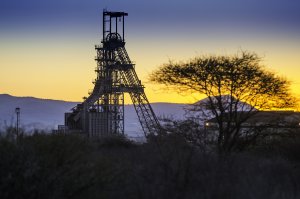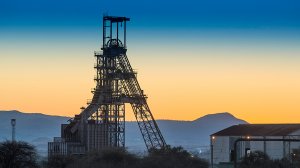The energy-intensive mining industry can benefit from waste-management company Interwaste’s refuse-derived fuel (RDF) plant in terms of more effective waste management and a reduced carbon footprint.
Interwaste is focusing on the South African mining industry, which has come under fire for its high electricity use, with State-owned power utility Eskom attributing about 15% of its yearly output to the sector.
The Germiston-based company notes that the mining community has already shown interest in the plant. Interwaste launched South Africa’s first RDF plant in February to reduce waste to landfill as part of its continuous efforts to contribute to government’s efforts to reduce the country’s carbon footprint by focusing on effective waste-management solutions.
Through the plant, the first of four lines that might expand into KwaZulu-Natal, the Eastern Cape and the Western Cape, Interwaste aims to use general, industrial and municipal waste to produce alternative fuels. This will ensure that South Africa relies less on vital and carbon- intensive resources such as coal.
“The RDF plant [enables us] . . . to continue advocating safe operational practices that not only take our environment into account but also reduce our customers’ operational expenses,” says Interwaste CEO Alan Willcocks.
By exploring alternative waste management solutions such as RDF, companies can witness a return on their investment in the techno- logy within about five years, as the fuel offers a more substantial economic alternative to traditional fuels.
“We work closely with our clients to promote a culture of responsible waste management practices by helping them to separate the waste on site before it goes into the RDF plant for production into a solid recovered fuel [that can be used to generate power], meets European standards and is equivalent to A-grade coal,” Willcocks says.
Mining Waste
Although the mining sector has been a key driver for the growth and development of South Africa’s economy, the waste generated from its activities, such as acid mine drainage, can pose serious threats to communities and the environment, Willcocks comments.
The negative impact that mining activities have on the environment ranges from the pol- lution of water resources to affecting biodiversity and human health.
Waste solutions group DCLM CEO Olivier Meyer said in a media statement in 2014 that South Africa’s biggest contributor to the solid- waste stream was the mining industry.
As such, waste-management companies need to provide stringent advisory services for all environmental legislation, standards and guidelines that might be applicable to waste management in South Africa’s mining sector.
This needs to be done to ensure that the impact of the waste is managed correctly, is not detrimental to the environment and can be reduced to meet the rising need for sustainable solutions in the sector.
“We have a team of experts focusing on solutions for sustainable mine waste management research to address industry challenges,” says Willcocks.
Interwaste’s objective is to develop and assess long-term, scientifically sound and sustainable options for mine waste disposal, management and rehabilitation.
This multidisciplinary approach, combined with a range of resources, enables the company to assist mining companies at all stages of a project, from feasibility and planning to operation and final decommissioning.
Providing an integrated waste management service that combines the efforts of various service providers into one holistic, integrated and accountable waste management system is critical in understanding the types of waste generated and in creating a platform from which to implement the most effective strategy, says Willcocks.
“Interwaste advocates the use of long-term, environmentally acceptable approaches to meet increasingly stringent regulatory requirements, such as the increase in the compliance requirements for waste generators, transporters and waste managers, as well as adhering to public concerns and reducing liability regarding possible environmental contamination by a mining project,” he concludes.
Edited by: Tracy Hancock
Creamer Media Contributing Editor
EMAIL THIS ARTICLE SAVE THIS ARTICLE
To subscribe email subscriptions@creamermedia.co.za or click here
To advertise email advertising@creamermedia.co.za or click here















